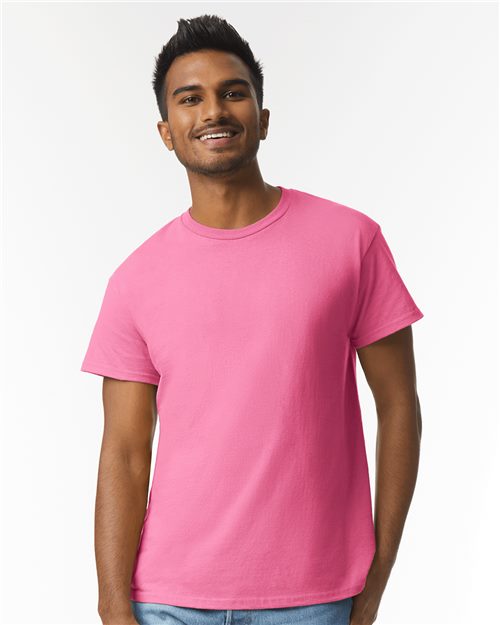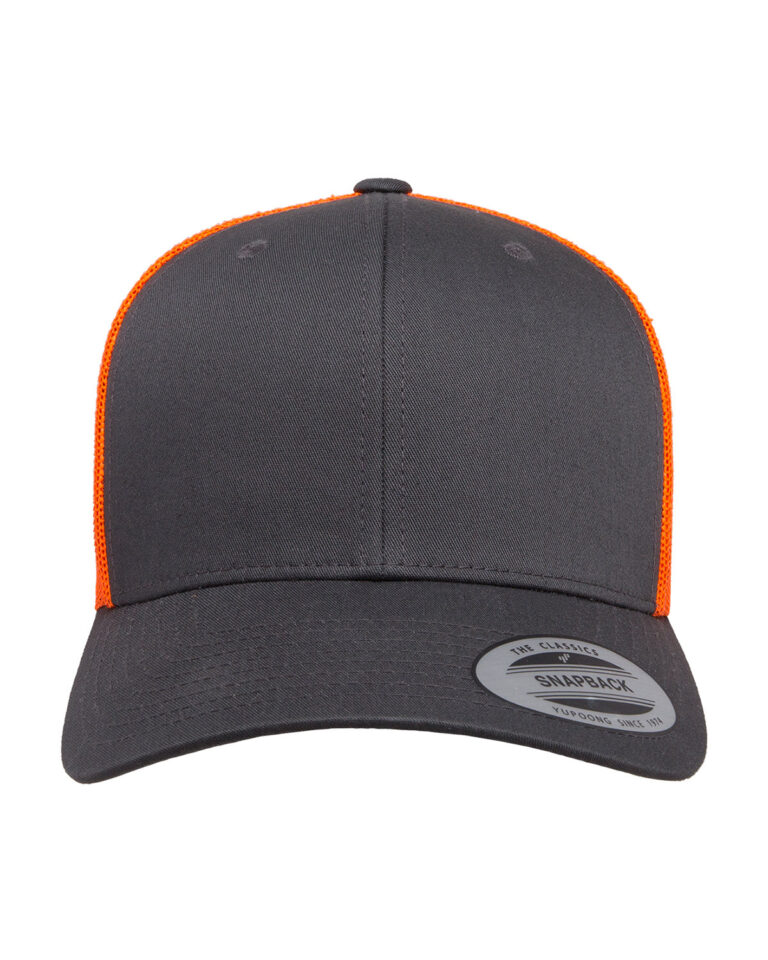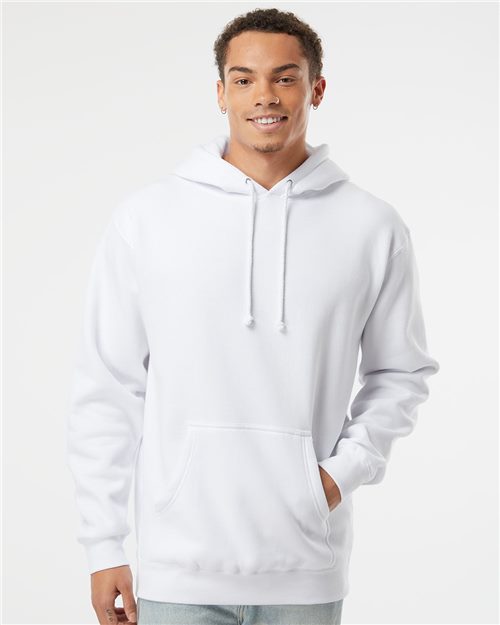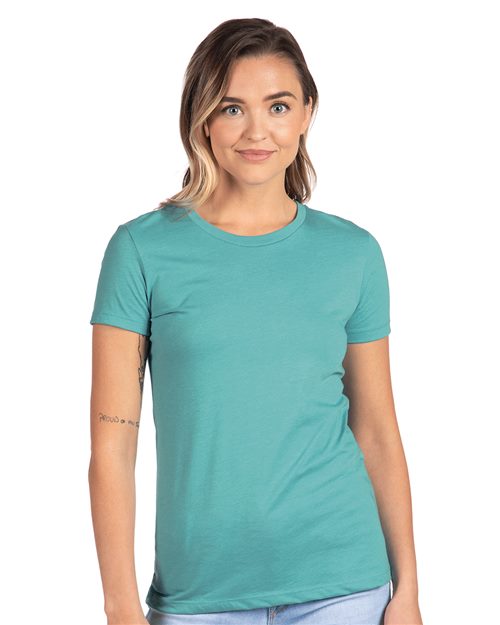Have you ever dreamed of turning your passion for fashion into a full-fledged clothing brand? Starting such a venture takes more than just creative designs. It needs strategic planning and industry know-how.
Our guide will walk you through the steps to launch a successful clothing line. You will blend creativity with business skill. Keep reading – your fashion empire begins here.
Key Takeaways
- Pinpoint your market and understand your customers to create clothing that resonates with them.
- Develop a solid business plan, set goals, and prepare for challenges like competition and finances.
- Build a strong brand identity with a memorable name, logo, and consistent visual theme.
- Focus on product design by honing your skills, choosing the right fabrics, and creating unique designs.
- Set up manufacturing with reliable partners, ensure quality assurance, manage inventory wisely.
Identifying Your Market

Finding your market is key for a clothing empire. It’s about tapping into the pulse of your future buyers and understanding their style. Dive deep past trends. Cultivate an intuition for what will resonate with those who’ll wear your label with pride. When they win, so do you.
Understanding your audience
Know your customers like you know your closest friends. This means figuring out what they love, need, and feel passionate about. Your clothing line should speak to them directly. If you’re aiming for young adults who are into street fashion, then each piece needs to shout their style.
Keep asking yourself: Who will wear my clothes? What would make them choose my brand? Align with your brand story and values that resonate with your target audience.
Connect with fans of fashion by showing you understand their world. Use social media polls, read comments and join conversations about trends they follow. This keeps your designs fresh and appealing.
Make every clothing item a hit by predicting what buyers want before they even ask for it. Your success in the clothing business hinges on this deep connection with those who’ll be wearing – and loving – what you create.
Following fashion trends
Keep track of the latest fashion trends to resonate with your market. Spot what’s hot in magazines, on social media, and at fashion shows. Use these insights to design your clothing line.
Trends guide you on colors, fabrics, and styles that are popular now. They also help you predict what customers will want in the future.
Use trend information wisely to stay true to your brand identity while keeping up with customer desires. Mix current trends with your unique style. Offer something fresh yet familiar.
This way, you’ll attract buyers looking for trendy pieces that stand out from the crowd. Always be ready to evolve as new trends emerge so that your brand stays relevant and exciting.
Creating a Business Plan

The future of your clothing brand depends on a strong business plan. It is a blueprint that charts the path from new ideas to a thriving fashion empire.
It’s about sketching the big picture.
Setting objectives and goals
Setting objectives and goals is like mapping out a treasure hunt. You need to know where you’re going before you start. Your business plan must outline clear, achievable targets for your clothing brand.
Think about the goals for each quarter or year. It could be breaking even, hitting a sales goal, or launching new products.
Create smart goals that are specific, measurable, attainable, relevant, and time-bound. This approach keeps your clothing brand on track toward long-term success. Decide on the type of clothing you’ll produce and set sales targets.
Aim for growth in both your online store and through brick-and-mortar retail partnerships. Stay focused on these goals as they will guide every decision you make from design to distribution.
Identifying key challenges
Starting a clothing brand comes with obstacles. You must know these challenges to prepare for them. First, there’s the need for creativity in your designs while keeping costs low. This balance is tough but crucial.
Competition is fierce in the fashion business, too. You’ll face established brands and new ones popping up all the time. Standing out means having a strong brand identity and unique value proposition.
Plus, you’ve got to keep up with trends without losing what makes your brand special.
Finances can be tricky when producing clothing lines too. Managing cash flow ensures you pay bills on time and invest back into your business. And let’s not forget marketing: how will you reach customers? A solid plan here can make or break your success.
Lastly, there’s legal stuff. You need to get licenses and meet labeling rules. These steps protect your brand later.
Planning for growth
Growth is a big part of your clothing brand’s future. Make plans to expand even before you sell your first item. Think about how you can reach more people and sell in new places. Consider using online marketplaces or building your own Shopify store for selling online.
Always be ready for higher demand and have a plan to produce more clothing quickly.
Keep an eye on trends and be flexible with your designs. Offer fresh collections that excite customers and keep them coming back. Build relationships with suppliers so when it’s time to make more, you’re all set.
Invest in marketing to spread the word about your unique brand identity further as you grow. Remember, success comes from planning ahead and adapting fast!
Developing Your Brand

When kick-starting your own clothing empire, it’s not just about chic design—it’s a fierce brand identity that truly sets you apart. Imagine the power of well-known logos and taglines.
Here, we dive into crafting a memorable presence. It resonates with your target audience. We use creativity to create not just clothes but a legacy.
Choosing a brand name
Pick a brand name that stands out. Make it easy to say, spell, and remember. Your brand name should reflect your style and attract the customers you want. Think about what makes your clothing line unique.
Consider trademarks too. You want a name that’s all yours, without legal issues later on. Test the name with friends, family, and potential customers. Their feedback can help you choose the perfect name for your new fashion brand!
Creating unique brand assets
Your brand is the heart of your clothing line. It’s what sets you apart from the rest. Here’s how to create assets that make your brand stand out:
- Choose a brand name that resonates with your target market. Make it memorable and easy to pronounce.
- Design a logo that captures the essence of your clothing line. Use colors and shapes that reflect your style.
- Develop a tagline or slogan that speaks to the benefits of your clothes. Keep it catchy and concise.
- Craft a visual theme for all your marketing materials. Stick to a consistent color scheme and font style.
- Take professional photos of your clothing. High – quality images show customers the detail and quality of your designs.
- Create unique packaging for your products. Consider eco-friendly options that align with customer values.
Building a strong brand identity
A strong brand identity makes your clothing line stand out. You must create a recognizable image that captures the essence of your brand. Think about iconic logos and colors. They’re more than just pictures or hues. They connect with customers, embodying all the feelings you want about your clothing.
This visual language communicates who you are and what you offer without saying a word.
Crafting this identity involves a deep dive into the heart of what sets your clothing apart. Establish consistent themes in all areas, from product design to marketing materials. Your branding should show quality and uniqueness. These are core values in fashion.
Keep refining until every label, website graphic, and social media post aligns with this vision perfectly.
Product Design and Development

Starting a clothing line has a realm of its own. Product Design and Development is your creative battleground. It’s where visionary sketches come to life. Fabrics are chosen with precision. Every stitch becomes part of your signature narrative..
Developing design skills
Work on your design skills to make your clothing stand out. Learn the basics of drawing and fashion illustration. Use online courses and tutorials to get better at sketching your ideas on paper.
Practice often, as this will help you capture the style of your new clothing line.
Get familiar with design software like Adobe Illustrator or Photoshop. These tools let you create digital versions of your designs. They’re essential for making detailed patterns and prints for fabrics.
Experiment with different textures and colors to see what looks best for the clothes you want to produce. Keep designing until you find a look that’s all yours!
Sourcing and designing fashion fabrics
Creating a standout clothing line means picking the right fabrics. You want materials that look good, feel great, and fit your brand’s style.
- Explore fabric options: Start by looking at different types of fabric. Cotton, silk, wool, and synthetics each give a distinct feel and appearance.
- Visit fabric stores: Touch and stretch the fabrics to see how they move. This will help you understand their quality.
- Attend trade shows: Fabric suppliers showcase their goods at these events. It’s a chance to network and find unique materials.
- Order samples: Before you buy in bulk, get small pieces of fabric to test out your designs.
- Check for comfort: Wear the sample fabrics yourself. Make sure they’re comfortable on the skin.
- Look for durability: Test the fabric for strength. You don’t want clothes that tear easily.
- Consider care instructions: Think about how easy it is to wash and maintain your chosen fabrics.
- Decide on colors and patterns: Choose ones that match your brand’s vibe and appeal to your audience.
- Go eco-friendly: Many customers like sustainable options. Research organic or recycled textiles.
- Negotiate with suppliers: When you find a good source for fabrics, talk about pricing or exclusive deals.
Creating unique designs
After selecting the right fabric, it’s time to bring your vision to life with unique designs. Your clothing line’s success depends on how well you stand out with original styles.
- Sketch your ideas on paper first. Draw rough outlines of the clothing pieces you imagine. Get creative with shapes and silhouettes.
- Use design software to refine sketches. Programs like Adobe Illustrator can help you polish your ideas into professional mockups.
- Consider color theory in your designs. Choose colors that appeal to your target audience and match the mood of your collection.
- Experiment with patterns and prints. Make custom graphics or explore different textures that could set your pieces apart.
- Infuse personal flair into every piece. Add elements that reflect your brand’s story or values, like unique buttons or signature stitching.
- Pay attention to fit and function. Ensure that the clothing is not only stylish but also comfortable and practical for everyday wear.
- Create prototypes and test them out. Wear them yourself or use models to see how they look and move in real-life settings.
- Gather feedback from potential customers. Show off your prototypes at fashion shows, pop – up shops, or through social media polls.
- Iterate based on responses you receive. Use the input to make adjustments until you have a design that resonates with your audience.
- Stay true to your brand identity throughout the design process. Every piece should feel like part of a cohesive collection that reflects the essence of your brand.
Setting Up Manufacturing and Production

Moving from design to apparel requires a smooth production process. This phase is crucial. It’s where your vision becomes real. You must partner with a manufacturer. They must understand your quality needs. They must align with your ethics and timelines. These are vital for your brand’s success.
Finding a reliable clothing manufacturer
Starting a clothing brand means you need to produce your clothing. A reliable manufacturer is key for quality and timely delivery. Here’s how to find one:
- Research potential manufacturers. Look online, ask in forums, and check industry publications.
- Prioritize experience and reputation. Choose manufacturers known for quality work and good service.
- Inspect their production capabilities. Make sure they can handle the type of clothing you want.
- Ask about minimum order quantities. Find out if they match your production needs.
- Consider their location. Think about shipping costs and ease of communication.
- Check for ethical practices. Ensure they follow labor laws and have safe working conditions.
- Request samples of their work. See the quality firsthand before placing a large order.
- Discuss pricing clearly. Understand all costs involved to avoid surprises later on.
- Communicate your expectations. Make sure they understand your brand’s standards.
- Read through contracts carefully. Know what you’re agreeing to with regards to deadlines and payments.
Quality assurance
Good quality assurance is essential for your clothing brand’s success. You must check every piece of clothing for any flaws. Look at the stitches, fabric, and fit to make sure they meet your standards.
If customers find problems with what they buy, they might not come back.
Work closely with manufacturers to prevent mistakes. Make a clear list of quality requirements that every product has to meet before you sell it. Keep an eye on customer feedback too—it helps catch issues early and fix them fast.
Remember, happy customers are likely to tell their friends about your great clothes!
Sourcing and inventory management
Starting your own clothing line means handling lots of clothes. Keeping track of what you have and where it comes from is key. Here’s how to manage your sourcing and inventory:
- Partner with quality suppliers. Look for fabric providers and clothing manufacturers who offer the best materials.
- Keep good records. Write down every order you make and receive to stay organized.
- Invest in inventory software. Use a program that can help you monitor stock levels easily.
- Build relationships with multiple suppliers. Don’t rely on just one source for your materials in case they run into issues.
- Learn to forecast demand. Make educated guesses about how much clothing you’ll sell.
- Order samples first. Check the quality of materials before buying large quantities.
- Stay updated on supply chain news. This helps you anticipate delays or shortages.
- Have a storage plan. Know where you’ll keep your inventory safe and neat.
- Regularly check your stock. Count items often to know exactly what is available.
- Set reorder points. Decide when it’s time to get more supplies so you never run out.
Pricing and Distribution

Setting the right price for your clothes isn’t just about covering costs. It’s a strategic dance. It puts your brand in the market and lures your ideal customers.
Exploring many distribution channels will amplify where and how consumers can find and buy your clothing line. This ranges from boutique partnerships to digital storefronts. What good is an exceptional product if no one sees it?.
Building pricing strategies
Creating the right pricing strategies is key for your clothing brand’s success. You need a plan that covers costs and appeals to your target market. Here’s how to set up effective pricing:
- Know your costs. Calculate the total cost of producing each piece, including materials, labor, and any other expenses.
- Check out competitors. Look at what similar brands charge for their clothing. This helps you find a price point that fits the market.
- Consider perceived value. Think about how customers view your brand. Are you a luxury brand or budget-friendly? Price accordingly.
- Set profit margins. Decide on a percentage that gives you profit after costs. This will be added to each item’s cost to find the final price.
- Test different prices. Try selling at various price points and see what works best for your items and customers.
- Use psychological pricing. Setting prices just below whole numbers (like $19.99 instead of $20) can make items seem cheaper.
- Plan for discounts and sales. Decide how often and how much you’ll reduce prices for promotions without hurting profits.
- Keep an eye on costs over time. Monitor changes in production costs so you can adjust prices as needed without losing money.
Selecting sales channels
Once you have your pricing strategies in place, it’s time to decide where to sell your clothing. Your sales channels will be where customers can find and purchase your products. Here’s how to select the right ones for your brand:
- Analyze your target audience. Find out where they like to shop. If they’re online shoppers, consider an e-commerce platform.
- Consider a physical presence. A local boutique or pop-up shops might attract those who prefer in-person shopping.
- Use online marketplaces. Websites like Etsy or eBay reach a broad audience and can boost visibility.
- Explore social media sales. Platforms like Instagram and Facebook now offer ways to sell directly through posts.
- Look into wholesale opportunities. Selling large quantities to retailers can expand your brand’s reach.
- Attend trade shows and fashion events. These gatherings connect you with buyers and fashion influencers.
- Think about subscription services. Offer monthly boxes of selected items to create a recurring revenue stream.
- Weigh the benefits of consignment shops. This lets you place products in stores without upfront payment but involves sharing profits.
- Create a great customer experience on each channel you choose. Make sure branding is consistent on all platforms.
Product distribution
Getting your clothing to customers is key for a successful brand. Here are steps for effective product distribution:
- Choose the right sales channels. Decide where your clothes will be sold, like online stores or physical shops.
- Set up an online clothing store. Make it easy for customers to find and buy your outfits on the web.
- Look into wholesale clothing options. This lets you sell large quantities to retailers who then sell to their customers.
- Consider drop shipping. With this method, a third-party ships orders directly to buyers for you.
- Use social media platforms. Platforms like Instagram and Facebook can be great places to sell your clothes directly.
- Attend trade shows and fashion events. These gatherings can help you network and find new places to sell your line.
- Work with distributors. They have networks that can get your clothing into more stores.
- Offer pre – orders for upcoming collections. This helps manage inventory and predict demand.
- Build relationships with retailers. Strong connections can lead to loyal clients who consistently stock your designs.
Marketing Your Clothing Brand

Creating a captivating story for your brand is essential. This is where the magic of marketing comes into play, turning casual browsers into loyal customers. Dive deeper to find the strategies that will boost your clothing line’s presence.
Creating a marketing plan
Put together a solid marketing plan to spread the word about your new clothing brand. Decide who you want to reach and choose the best ways to connect with them. Use social media, fashion blogs, and email campaigns to show off what makes your clothes special.
Create exciting content that tells a story around your brand.
Plan sales and promotions throughout the year. Track what works so you can do more of it. Partner with influencers and other brands that share your style. Remember, good marketing helps people find out about your amazing clothing designs!
Pitching your brand to retailers
After crafting a solid marketing plan, your next step is to get your clothing line onto store shelves. You need to convince retailers that your brand is the perfect addition to their lineup. Here’s how you can make a strong pitch:
- Research potential retailers before you reach out. Look for stores that sell similar styles or cater to your target audience.
- Prepare an impressive brand presentation. This should include high-quality images of your products, a story about your brand, and customer testimonials.
- Highlight what sets your clothing apart. Talk about its unique features, like sustainability or local manufacturing.
- Know your numbers inside out. Retailers will want to know about pricing strategies, profit margins, and sales projections.
- Offer samples of your products. Letting store buyers see and feel the quality of your clothing can be persuasive.
- Be ready with a compelling business proposal. This should outline terms of sale, delivery timelines, and any other important details.
- Show them press coverage or social media buzz about your clothes. Proof that people are talking about your brand helps build credibility.
- Discuss marketing support you’ll provide. Explain how you will drive customers to their stores through joint promotions or campaigns.
- Follow up after the meeting but don’t be pushy. Give them time to consider while showing them you are eager and available for further discussion.
- Listen carefully to feedback they offer. Use it constructively to improve future pitches or refine areas of your offering.
Building an online clothing store
Launch your clothing brand online to reach more customers. Choose a catchy domain name that matches your brand and create an easy-to-navigate website. Use high-quality images of your clothes and include detailed product descriptions.
Set up secure payment options so people can buy easily.
Promote your new online store through social media, email marketing, and fashion blogs. Offer special deals to attract first-time buyers. Keep updating the site with fresh content to keep customers coming back for more.
Now let’s focus on the legal side of things in “Legal Aspects of Starting a Clothing Brand.”
Legal Aspects of Starting a Clothing Brand

Navigating the legalities of launching a clothing line is crucial. Think about trademarks, business structure, and following manufacturing rules. Understanding these requirements isn’t just about ticking boxes. It’s about laying down the law for your brand’s foundation. You must ensure your chic designs stay on the right side of legal fine print.
Acquiring a business license
Getting a business license is key when you start a clothing brand. It makes your business legal and helps you avoid trouble.
- Research the kinds of business licenses needed in your area. Each city and state has different rules.
- Visit your local government website or office to find out what documents they need from you.
- Decide on the structure of your business, like sole proprietorship or LLC, because this affects your license type.
- Fill out an application for a business license, listing all details about your brand and products.
- Pay any fees that come with the application. These costs vary by location and business type.
- Wait for approval. This can take several days to a few weeks, depending on where you live.
- Keep track of renewal dates so your license stays current; it usually has to be renewed every year.
Registering your business
Registering your business is a key step in launching your clothing line. It makes your brand official and protects you legally.
- Choose a business name that stands out. Ensure it fits your brand and no one else has it.
- Do a name search. Check if the name’s taken in your state or online.
- Decide on a legal structure. Think about whether an LLC, sole proprietorship, or corporation works best for you.
- Get an Employer Identification Number (EIN). You’ll need this for taxes and to hire employees.
- Register with state agencies. File any necessary paperwork with your state government.
- Apply for licenses and permits. Different areas have different requirements; make sure you meet them all.
- Set up a business bank account. Keep personal and company money separate.
- Protect your brand with trademarks. Secure your logo, slogan, and brand name from being used by others.
Understanding labeling requirements
After getting your business registered, it’s time to focus on the details of your clothing line. Labeling is a key part of meeting industry standards and informing customers. Here are the essentials for understanding labeling requirements:
- Check the legal requirements – Different regions have their own rules for clothing labels. Make sure to research and follow the laws where you plan to sell your clothes.
- Include fiber content – Your labels must list what materials were used. This helps customers know what they’re buying and how to care for it.
- Care instructions – Teach buyers how to take care of their garments. This includes washing, drying, ironing, and dry-cleaning guidelines.
- Size information – Clearly state the size of each garment. Use standard sizing systems so shoppers can find the right fit without confusion.
- Country of origin – You need to reveal where your clothing was made. It’s mandatory in many places and can influence a customer’s buying decision.
- Manufacturer or brand name – Add who made the garment or which brand it belongs to. Customers often look for this when they trust a certain maker.
- Warnings or cautions – If there are special risks (like flammability), you must warn users clearly on the label.
- Trackability info – Some regions require a way to track products back to their source, like batch numbers or tracking codes.
Learning from Industry Experts

Diving into the deep end of the fashion pool means swimming with pros. Connecting with industry veterans can be your compass. They’ll help you navigate trends and avoid common pitfalls.
They’ve been where you’re heading. Their triumphs and slip-ups provide a blueprint for your own journey. Learning from those who’ve already tailored their path is invaluable for your clothing brand’s future.
Gaining insights from successful clothing brands
Learning from successful clothing brands can teach you a lot. They show how to build your brand and grow your business.
- Study their stories: Look at how big brands got their start. Know their challenges and what steps they took.
- Check out their designs: See what kinds of clothes they make. Notice the colors, patterns, and styles they use.
- Understand their marketing: Find out how they get people excited about their clothes. Watch their ads and social media.
- Learn from their sales strategies: Successful brands know how to sell. They pick the right stores and online platforms.
- Get ideas for customer service: Great brands take care of their buyers. See how they handle questions and returns.
- Pay attention to quality control: Good brands make sure every piece of clothing is perfect before it goes out.
- Observe brand loyalty efforts: Find out why people keep buying from the same brand. It’s often more than just the clothes.
- Analyze their business models: Some sell only online, others in stores too. Look at what works for them.
- Notice collaboration trends: Many successful lines work with celebrities or other brands. This can bring in more fans.
- Watch for innovation: Brands that stay ahead are always trying new things. Keep an eye on what’s changing in fashion.
Keeping up with industry trends
Gathering wisdom from top brands is just one piece of the puzzle; staying current with fashion trends keeps your brand fresh and relevant. Fashion moves fast, and what’s popular today might be forgotten tomorrow.
To stay on top, watch runway shows, read style blogs, and listen to customer feedback. This helps you spot patterns and ideas that can inspire your next collection.
Pay attention to social media influencers as well—they’re often the first to showcase new styles. Regular research into market reports can also guide you in making smart choices about what clothing pieces to produce next.
Keeping a finger on the pulse of the industry ensures that your clothing line stays desirable and competitive in a bustling market.
Continual learning and improvement
To keep your clothing brand ahead, embrace learning as a core part of the journey. Dive deep into fashion trends and understand what drives your audience to stay relevant. You need to learn from both successes and failures; this helps refine your strategies over time.
Attend industry workshops, network with other designers, and read up on fashion news regularly.
Stay hungry for knowledge in the ever-changing world of fashion. This commitment to growth will show in every piece you design and every campaign you launch. It sets successful brands apart from those that fall behind.
Stay connected with customer feedback, too – it’s gold! Use it to make better products and strengthen your brand’s unique value proposition. Keep sharpening those design skills; there’s always room for improvement!
Conclusion
Starting your own clothing brand is a big adventure. Remember, it’s all about combining creativity with smart business practices. Dive in, design with passion, and tackle the fashion world head-on.
Keep learning and adapting to make your mark on the runway of success. Your unique brand is ready to shine!
FAQs
1. How do I start my own clothing line?
First off, think about your brand—what unique value it will have and the type of clothing you want to produce. Then, you’re ready to dive into designing a clothing line and finding a manufacturer to bring your ideas to life.
2. What does it cost to start a clothing brand?
Starting costs vary—a lot hinges on how you plan to produce your clothes and market your brand! From custom designs to buying wholesale, every choice you make shapes your budget.
3. Can I create an online business for my clothing line?
Absolutely! Launching an online business is a smart move; it lets customers from everywhere check out your products. Plus, social media can be your best friend for marketing!
4. Where can I find someone to make my clothes?
Finding the right manufacturer is key. You’ll need one that aligns with your vision for quality and style and fits your budget.
5. Do I need lots of money to buy inventory when starting out?
Not necessarily! You’ve got options like dropshipping or making made-to-order pieces. They can keep initial costs down until things take off.
6. How should I begin selling my newly created clothing collection?
Ready, set, go—start building that customer base! A blend of stellar photos, engaging product descriptions, and smart use of online platforms are part of the mix for selling success.







